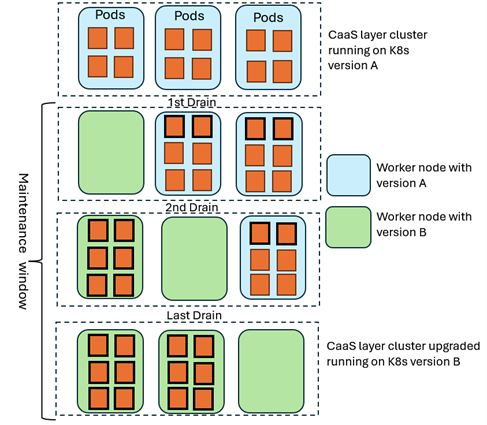The user plane of the 5G core network is the part in charge of transmitting the network data traffic. The experience was completed by Telefónica O2 and Ericsson. To do so they used In-Service Software Upgrade (ISSU) which enables network operators to update their software in the core network without having to interrupt operations in individual parts of the network or reroute data traffic. This means that upgrades can be carried out smoothly during ongoing network operation and with full data utilization. Mobile customers benefit from improved networks as they are always up to date, for example with regard to technical features and security solutions. In-service software upgrades increase the degree of automation of the network and significantly reduce the need for manual intervention.
O2 Telefónica and Ericsson are also working on continuously automating the software rollout process, for example through Continuous Integration and Continuous Delivery (CI/CD). This improves the flexibility and time-to-market for new services and increases the efficiency of the network.
What is ISSU?
ISSU stands for In-Service Software Upgrade, a methodology used in Telco systems to upgrade the CNFs (Cloud-Native Network Functions) without downtime or disruption in the services; that is, while the services are running. This capability represents a step forward in the Telco services operational efficiency, ensuring seamless upgrades with service continuity, reducing risks, and providing flexibility.
The ISSU methodology can be applied to the workloads (Cloud-Native Network Functions) and to the Containers layer (CaaS, normally Kubernetes).
ISSU in the Cloud-Native Network Functions (CNFs)
In this case the CNF version is changed and the CaaS/Kubernetes maintained, which requires the CNF new version to be run compatible with the current CaaS/Kubernetes version. The CNFs implement this feature to support upgrades in a hitless way to minimize service impact to the end user, especially important for traffic path and stateful CNFs.
ISSU in the Containers layer (CaaS)
In this case the CaaS/Kubernetes cluster is undergoing a version change but not the CNFs, which must be compatible with new CaaS/Kubernetes version. This is a feature that demands to the CNF to gracefully support the drain request signaled by Kubernetes and preserve the service and state information to the end customer.
The most common and extended mechanism for CNFs ISSU implementation is based on Rolling Upgrade, nativelysupported by Kubernetes.
CNF release upgrade Rolling Upgrade description:
- New version (v2) deployed in a staggered fashion, one component at a time, while others continue to operate on the old version (v1).
- Incoming traffic is split between available pods (old and the new ones), but new connections are going to new version (v2), so no control over traffic required.
- New version Pods replaces the old ones; no additional resources/HW are required.
- System continues functioning during the upgrade process, minimizing potential downtime or disruption to end-users.
- It is supported by default in Kubernetes.
CNF Rolling Upgrade Service process

CaaS layer Rolling Upgrade
The CaaS Cluster Rolling Upgrade (RU) is a procedure where the Kubernetes cluster is upgraded while the CNFs continue processing traffic, minimizing the service impact. In general, the cluster upgrade includes Kubernetes release change. To perform CaaS Cluster RU additional capacity is required, at least one additional worker node, and the following points shall be considered:
CaaS layer Rolling Upgrade description
- Existing pods replicas are moved from the node to be upgraded to another. When draining a worker node, all pods are evited from it.
- Preventively, it is recommended to drain worker nodes during a maintenance window.
- Kubernetes provides mechanisms (Pod Disruption Budget) to guarantee that there is some active replica providing the service.
- The commands and procedures for CaaS RU are based on Kubernetes functionality and are CaaS layer independent.
CaaS layer Rolling Upgrade Service process

Conclusion
ISSU will be gradually introduced in Telefónica network providing higher operational efficiency, reduced risk, and improving customer satisfaction.






